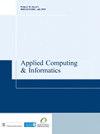通过轻量级深度学习进行葡萄酒质量评估:整合 1D-CNN 和 LSTM 以分析电子鼻 VOC 信号
IF 12.3
Q1 COMPUTER SCIENCE, INFORMATION SYSTEMS
引用次数: 0
摘要
目的 在葡萄酒行业,保持卓越的质量标准对于满足生产商和消费者的期望至关重要。传统的葡萄酒质量评估方法涉及劳动密集型流程,并且依赖于精通鉴别口味特征和关键质量因素的鉴赏家的专业知识。在这项研究中,我们介绍了一种创新而高效的方法,其核心是利用电子鼻分析挥发性有机化合物(VOCs)信号,从而使非专业人员也能准确评估葡萄酒质量。设计/方法/途径为了设计出适用于这一目的的最佳算法,我们进行了四次计算实验,最终开发出一种专门的深度学习网络。该网络无缝整合了一维卷积层和长短期记忆层,专为手头的复杂任务量身定制。研究结果这些电子演示的结果都经过了细致的评估和分析,结果明确表明,我们提出的架构始终能达到令人满意的识别准确率,从 87.8% 到惊人的 99.41% 不等。所有这些都是在短短的 4 秒钟内实现的。这些令人信服的发现具有深远的影响,有望彻底改变葡萄酒质量的评估和跟踪,最终为葡萄酒行业及其所有利益相关者带来巨大利益,尤其是在挥发性有机化合物信号分析这一关键方面。本文章由计算机程序翻译,如有差异,请以英文原文为准。
Wine quality assessment through lightweight deep learning: integrating 1D-CNN and LSTM for analyzing electronic nose VOCs signals
PurposeIn the wine industry, maintaining superior quality standards is crucial to meet the expectations of both producers and consumers. Traditional approaches to assessing wine quality involve labor-intensive processes and rely on the expertise of connoisseurs proficient in identifying taste profiles and key quality factors. In this research, we introduce an innovative and efficient approach centered on the analysis of volatile organic compounds (VOCs) signals using an electronic nose, thereby empowering nonexperts to accurately assess wine quality.Design/methodology/approachTo devise an optimal algorithm for this purpose, we conducted four computational experiments, culminating in the development of a specialized deep learning network. This network seamlessly integrates 1D-convolutional and long-short-term memory layers, tailor-made for the intricate task at hand. Rigorous validation ensued, employing a leave-one-out cross-validation methodology to scrutinize the efficacy of our design.FindingsThe outcomes of these e-demonstrates were subjected to meticulous evaluation and analysis, which unequivocally demonstrate that our proposed architecture consistently attains promising recognition accuracies, ranging impressively from 87.8% to an astonishing 99.41%. All this is achieved within a remarkably brief timeframe of a mere 4 seconds. These compelling findings have far-reaching implications, promising to revolutionize the assessment and tracking of wine quality, ultimately affording substantial benefits to the wine industry and all its stakeholders, with a particular focus on the critical aspect of VOCs signal analysis.Originality/valueThis research has not been published anywhere else.
求助全文
通过发布文献求助,成功后即可免费获取论文全文。
去求助
来源期刊

Applied Computing and Informatics
Computer Science-Information Systems
CiteScore
12.20
自引率
0.00%
发文量
0
审稿时长
39 weeks
期刊介绍:
Applied Computing and Informatics aims to be timely in disseminating leading-edge knowledge to researchers, practitioners and academics whose interest is in the latest developments in applied computing and information systems concepts, strategies, practices, tools and technologies. In particular, the journal encourages research studies that have significant contributions to make to the continuous development and improvement of IT practices in the Kingdom of Saudi Arabia and other countries. By doing so, the journal attempts to bridge the gap between the academic and industrial community, and therefore, welcomes theoretically grounded, methodologically sound research studies that address various IT-related problems and innovations of an applied nature. The journal will serve as a forum for practitioners, researchers, managers and IT policy makers to share their knowledge and experience in the design, development, implementation, management and evaluation of various IT applications. Contributions may deal with, but are not limited to: • Internet and E-Commerce Architecture, Infrastructure, Models, Deployment Strategies and Methodologies. • E-Business and E-Government Adoption. • Mobile Commerce and their Applications. • Applied Telecommunication Networks. • Software Engineering Approaches, Methodologies, Techniques, and Tools. • Applied Data Mining and Warehousing. • Information Strategic Planning and Recourse Management. • Applied Wireless Computing. • Enterprise Resource Planning Systems. • IT Education. • Societal, Cultural, and Ethical Issues of IT. • Policy, Legal and Global Issues of IT. • Enterprise Database Technology.
 求助内容:
求助内容: 应助结果提醒方式:
应助结果提醒方式:


